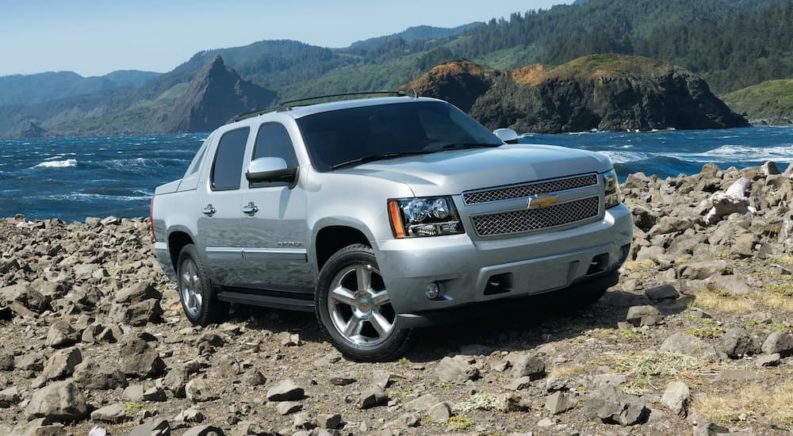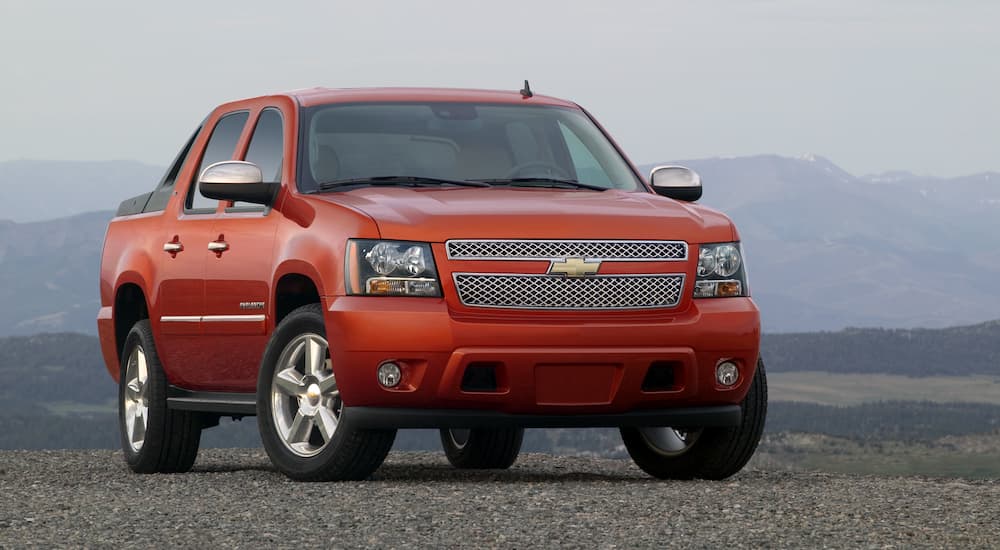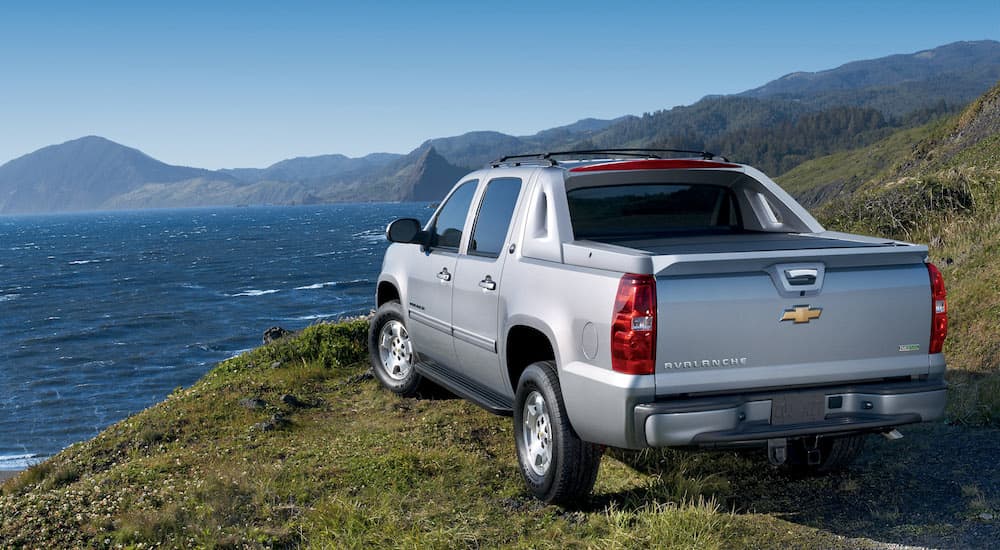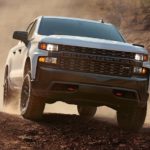Earlier this year, Chevy unveiled the specs and features for what’s undoubtedly one of their most significant accomplishments in recent years–the Silverado EV. In an age when more manufacturers are doing their part to be more responsible and take better care of the environment, Chevy took a massive leap forward by taking their flagship pickup and making it electric. Chevy stepped up to the plate and scored a home run for those who have been critical regarding the harmful emissions caused by the internal combustion engine.
While there’s much to be excited about, there were also some significant feelings of familiarity and nostalgia for quite a few. While the fully electric powertrain was new, the exterior design was reminiscent of another Chevy truck, the Avalanche. While the vehicle ceased production in 2013, many pine for the vehicle that some described as a monster truck. While you might be fortunate enough to find one at a used truck dealer, the truck’s existence is mainly relegated to memory. Let’s take a closer look at the history of a vehicle that once was.
2000-2007: The Storm Begins to Brew
At the dawn of the new millennium, there was a considerable change across the scope of the entire automotive industry. The SUV had begun its forward momentum toward the immense popularity it now enjoys. However, the designs and thought processes behind them were quite different from the subcompact crossovers that we know today. The concept behind many of them centered on the philosophy that bigger was better.
Look no further than the Hummer or Ford Excursion to see this theory in practice. Chevy certainly had its own titans of a formidable size, such as the Suburban and Tahoe, both of which are still in production today. Taking this method of thinking and applying it to the pickup resulted in the Chevy Avalanche in 2001. Chevy had already debuted the Silverado two years earlier, and it seemed like the bow-tie brand was destined for great things in the new millennium.
What made the Avalanche so unique among the many pickups and SUVs on the market was its style which appeared to merge the best of each into one vehicle. While possessing the size and style of a full-sized SUV, its open bed in the rear gave it the same qualities many look for in a pickup. This design was also implemented in the same year as the Cadillac Escalade EXT, in case you wanted to merge sophistication and style with the rough and tough reputation of GM.
Its distinctive look aside, the Avalanche had some formidable power underneath the hood. There were two Vortec engines that the Avalanche could be outfitted with. A 5.3L V8 was the standard offering and produced 285 hp. An available 8.1L V8 upped the horsepower rating to 340. It didn’t take long for the Avalanche to get noticed by critics and consumers alike, as Motor Trend awarded it the Truck of the Year Award in 2002. Like many of the trucks that Chevy produces today, a Z71 off-roading package was available for those who preferred to take the path less traveled. Interestingly enough, there was a Z66 On-Road package for those who craved the look and aesthetic of an off-road vehicle but were content to stay on the pavement.
For those who might have been skeptical of the Avalanche’s initial success, the first few years were met with rather impressive sales figures. Between 2002 and 2004, over 80,000 vehicles were sold yearly, and it appeared that popularity could only increase. There were minimal changes during this time period, though in 2003, a high-end Bose stereo system was made available. While foreign models such as the Ridgeline and Tacoma were becoming popular among truck owners, the Avalanche proved to be one of the cheapest trucks to maintain. Performance, low maintenance costs, and increasing sales were all part and parcel of its early success. Fate can be cruel, and what goes up must eventually come down.
2007-2013: The Storm Dies Down and Fades Away
2007 marked the start of the Avalanche’s second generation. While vehicle sales had been favorable in previous years, there was now a noticeable decline. In 2003, over 93,000 units had been sold in the United States alone, but by 2007 this number had dwindled to just over 55,000. From this point forward, there would be a steady decline that would ultimately lead to its discontinuation. As we’ve seen with other items, high sales don’t always indicate quality, appeal, or popularity. As we’ll see, the Avalanche was still an example of excellence.
For those who needed an off-road vehicle, the Avalanche was perfect. While a Z71 off-roading package had been available for the previous generation, the upgraded design elevated the Avalanche to new heights of off-road capability. The new package features a suspension specifically designed for harsh terrain, skid plates, and a new locking rear differential. A four-speed automatic transmission was standard and would eventually be replaced by a six-speed in 2009. A new engine was also introduced in the form of a 5.3L V8. Producing 326 hp and 348 lb-ft of torque, the Avalanche continued to be geared for high-octane performance.
While the Avalanche was built with the off-roader in mind, this was ultimately its Achille’s Heel. A vehicle that has a niche demographic means its sales depend upon them. The diminishing returns continued, and despite the introduction of the coveted Black Diamond edition of the Avalanche, production would eventually cease in 2013, along with the Escalade EXT. While the upcoming Silverado EV is more or less the spiritual successor to the Avalanche, it’s interesting to think of what might have been had the vehicle stayed in production. Perhaps if equipped with some of the Duramax diesel powertrains or kept on as a trim edition of the Silverado, the vehicle could have lasted considerably longer.
Some Final Thoughts on the Truck That Once Was
The history of the automotive industry is littered with vehicles that came and went and had their fair share of detractors and advocates. When it comes to the Avalanche, history has been something of a mixed bag. While it’s easy to look at the diminishing sales figures and think of it as a financial failure, there are other factors that need to be taken into consideration. Unlike unmitigated disasters such as the Pinto or the Edsel, the Avalanche was consistent in terms of quality. The vehicle was twice awarded by JD Power for initial quality, and in 2020, Consumer Reports named the vehicle as one of the top ten most reliable used pickups.
Data collected from several customer advocacy groups have all attested to the low yearly maintenance cost needed to keep one on the road. So, where does that leave it? If there’s something to be said about the Chevy Avalanche, it’s this: GM took a design that defied typical conventions and ran with it for over a decade. Perhaps if things unfolded differently, we’d be describing the Avalanche as the flagship truck of Chevy and not the Silverado 1500. Say what you will, but thanks to the design of the upcoming Silverado EV, its legacy is certainly continuing in one form or another.






